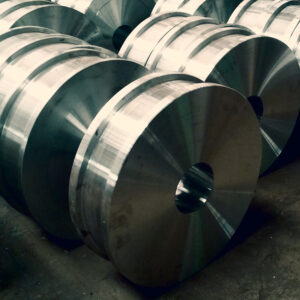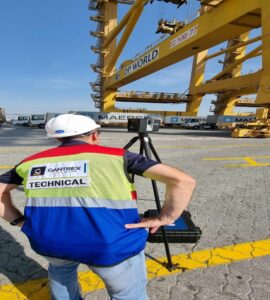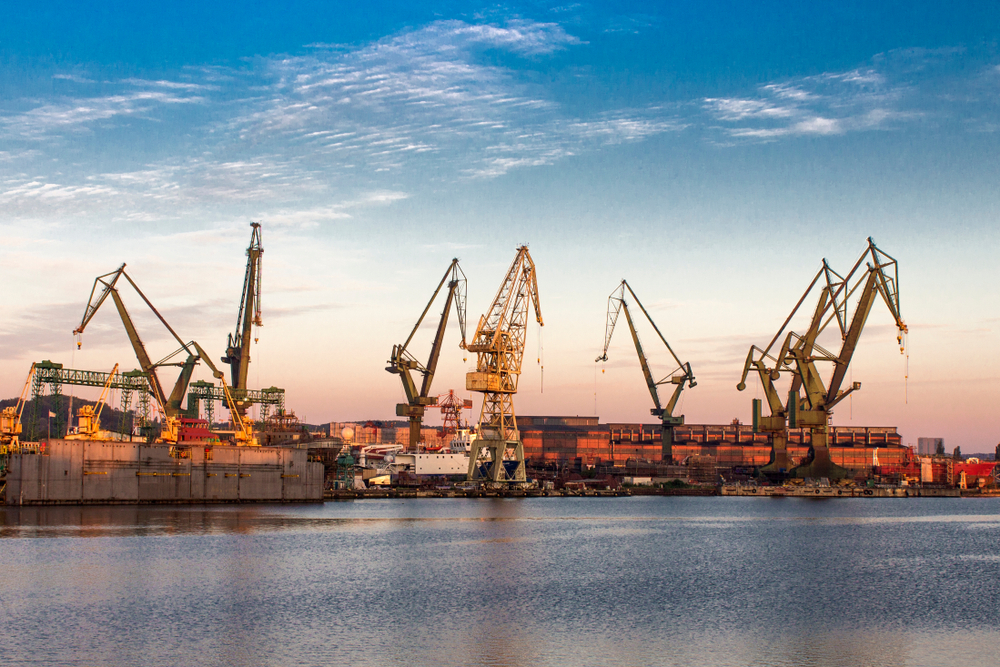We would like to introduce Ben Verschueren, who becomes the fourth member of the Gantrex team to feature in our ‘Introducing Series’. With three decades of experience and 2 of those within the Gantrex team, Ben has quite literally seen it all. Having worked on premier league football grounds to precision installation projects almost 2,500 metres above sea-level, what is it about his work ethic and style that keeps his projects on track?
Ben Verschueren – Quick Facts
Position: Assembly inspector
Base: Germany
Industry Experience:10 years in general industry before starting my 20 year career with Gantrex
Responsibility: It’s my job to make sure that when our installation teams come to site, everything has been prepared correctly for a smooth job. From logistics to HSE paperwork, technical support to customer care, if I’ve done my job correctly there’s nothing for the installers or the client to worry about.
Guiding Principle: No challenge is too big as there is always a solution!
Ben, you say that no challenge is too big. Can you give us an example of this?
There is the obvious challenge that we are witnessing at the moment with the Corona Pandemic that is affecting our operation on a worldwide scale. But, by working together with our partners, supply chain and customers we are finding ways to overcome the challenges that have been presented, from my side most notably in terms of logistics and the health and wellbeing of our installation teams.
Aside from this, and considering the many projects that I have been involved with over the last 20 years, the project which presented some real challenges and yet, is the one I cherish the most is the circular rail track for the MAGIC-telescope on the isle of La Palma. Situated on top of a mountain, myself and one other were responsible for this very complex install for the Max Planck Institute. It’s fair to say the challenges started before we even got to the installation stage, and it was in fact the logistics that called upon adaptability and a solution focused approach.
Flying from Germany to Jerez de La Frontera in Spain. I had arranged to collect the van and tools, before driving to catch a ferry in Cadiz. Then, following a 3-day crossing to Gran Canaria, we were notified of a tropical storm ahead which eventually caught up with us in the Port of Santa Cruz de Tenerife. Due to such significant and unforeseen weather challenges, I had to change track and boarded a freight boat to take me, and all of the equipment to the island of Las Palmas. From here, I then collected my colleague at the Port of Santa Cruz de La Palma, before we set off on our uphill drive in the mountains to a height of 2,400 metres. On arriving, the complex installation could finally begin. Working at such altitude, in temperatures which ranged from -3°C in the morning to 20°C by midday, we installed a circular rail with an overall required precision of 0.5mm on height, radius and diameter. The job was completed, successfully, but is one I will always remember!
Why, in your opinion, is quality installation so important?
In my opinion, the installation of crane rails can sometimes be undervalued by customers as they underestimate the importance of a correct and well installed rail. The rail is a wearable part of the machinery but by investing in the best, and ensuring they are correctly installed, you prevent costly repairs and under performance further down the line. To make a comparison: you can drive with your sportscar on an F1-track and everything’s okay. But try this on a gravel road and you’ll soon have problems with your suspension, the coach work, stability of the car and much more. So investing in the best materials and bringing in the very best professionals to install them is a strategy for optimum performance.
When it comes to the physical install, my colleagues in Germany are the experts. My contribution to a quality installation comes in the form of technical and practical know-how. My language skills are also a key component of this, allowing me to communicate clearly and effectively with everybody that makes the solution work. From project management to material buyer to material dispatch to site management and installation team, each of us has a critical role to play to deliver a quality job.
And keeping on the theme of quality, what does quality leadership look like to you?
When I started in 2000, I was given a clear objective to build up our Installation teams so that we became ‘best in class’ delivering world leading quality and generating a reputation for excellence. This was to translate across everything we did, from quality, collaboration and developing the team themselves.
After 7 years of hard work we had significantly grown our team and our ability to service projects. My job evolved from just preparing a couple of sites in Germany to travelling extensively and juggling project teams all over the world, making sure we delivered the highest quality and standards that our customers had come to expect. And this continues today.
Keeping quality on track means keeping the teams motivated and proud of what we all do. Sometimes it doesn´t take much to motivate the guys: a tap on the shoulder, having a good dinner, getting them new equipment to show that we care about the work that they carry out and are prepared to invest in them and help them be the best they can be. Whatever the motivation for each individual, my leadership style is pretty consistent. I am critical but constructive, lead by example and importantly, I admit when I make mistakes. I very much believe in leading by example and I would never expect anyone on my teams to do something I wasn’t prepared to do myself.
And how does this work for the customer? How does this style benefit them?
In the same way that leadership relies on trust – both ways, the same applies to the customer. I always keep my promises and I try to be authentic and visible at all times. I am solutions driven, so even when customers have bought our product and chosen to install themselves, I have, on more than one occasion gone to the project to teach non Gantrex teams how to install the product correctly. A recent example of this was for a project on the Kazak-Chinese border, on the new silk route, teaching Kazak workers to install 2 x 750m of MRS87A, and again in Knoxville, Tennessee, working together with a colleague teaching client teams how to install continuous supported rail.
What’s next for you and your teams Ben?
We have a number of new high warehouse projects in the pipeline that we will be working on. With immediate projects located across the Netherlands, the UK and Italy, my focus will be on making sure that our teams can work across multiple sites simultaneously. Our projects differ from others across the Gantrex portfolio as ours tend to be characterized by smaller projects across multiple locations. Right now, I am planning for 24 aisles of 110m HEB120 in the UK, and 15 aisles of 190m S41 for a project in the Netherlands. So, the challenge here is make sure things happen where they need to across all project sites simultaneously. But, as I say, there is always a solution!
And finally, what do you consider to be the key to project success?
Based on my career to date, the projects I have been involved with and the experts that I have worked alongside and for, I would say it comes down to a couple of simple, but essential things. Constructive communication, a high level of flexibility and the willingness to flex and adapt and finally, accurate, up to date information and project data. If you can get these three elements aligned, you are giving yourself and the project the very best chance of success.









